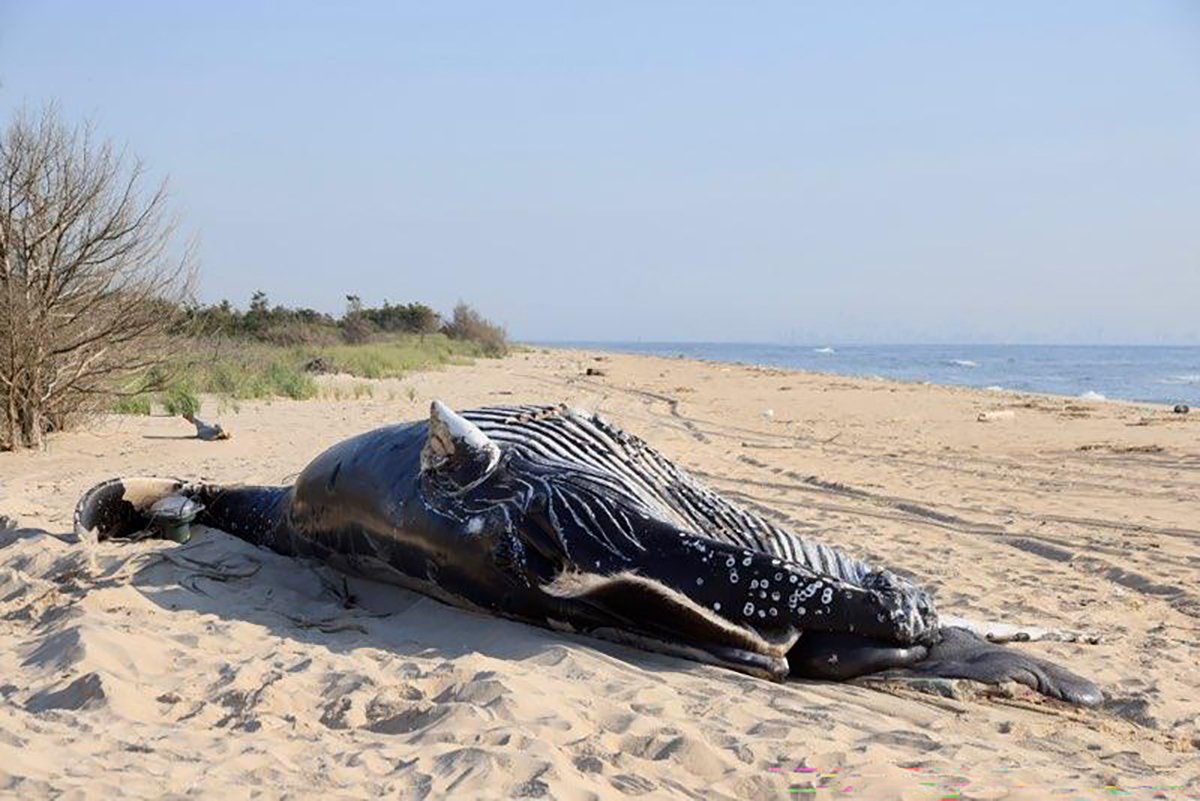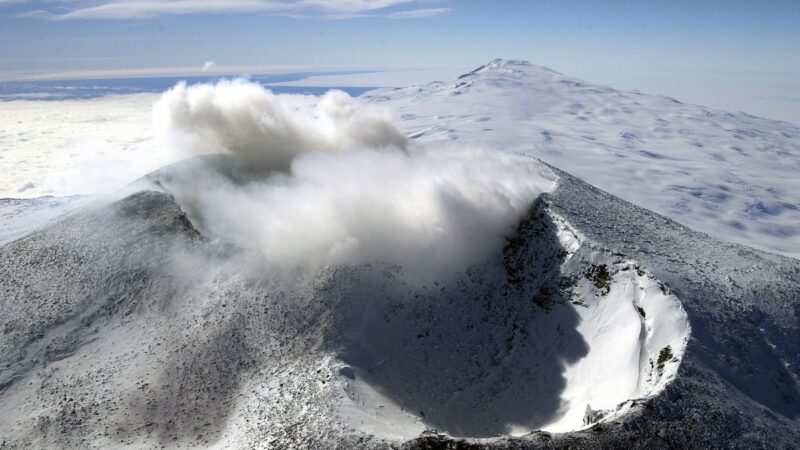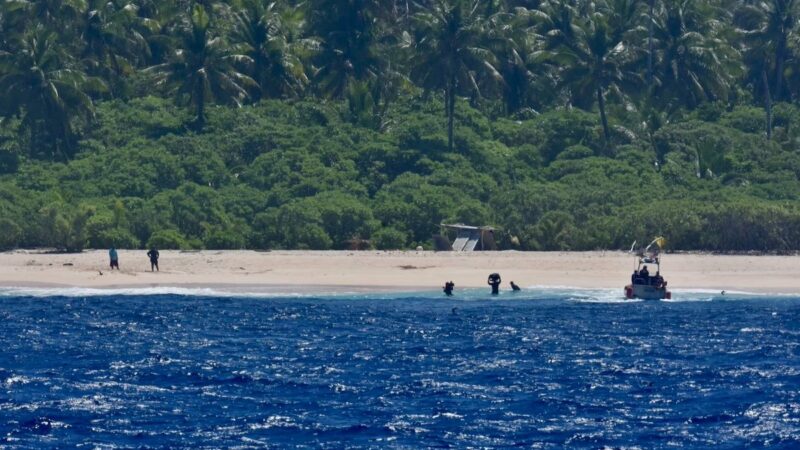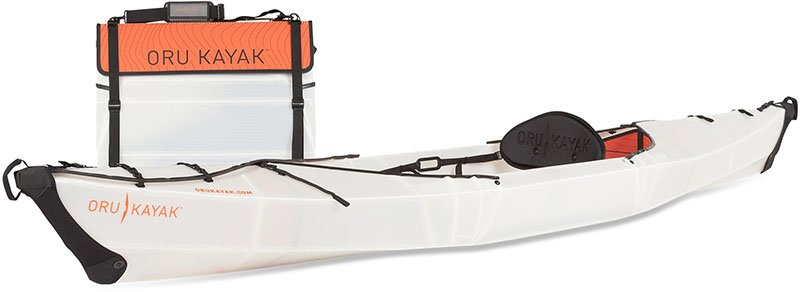Two Humpback Whales Die by Suspected Blunt Force Trauma
Two deceased humpback whales were found floating, one near Wainscott, New York, and the other in Raritan Bay, New Jersey. The Atlantic Marine Conservation Society andMarine Mammal Stranding Center performed necropsies on the two deceased humpback whales to determine the cause of death, and the results are disturbing.
The first whale found drifting in Shinnecock Inlet was a 47-foot-long male that was heavily decomposed. Scientists observed bruising in the blubber and muscle on both sides of the head and determined the cause of death to be “suspected blunt force trauma.” The whale was buried on the beach after the examination.
The second whale, a 28-foot-long female retrieved by the U.S. Army Corps of Engineers and New Jersey Fish and Wildlife Service in Raritan Bay, sustained injuries consistent with vessel strikes, including skull and fin lacerations and fractures. The animal was buried after the examination at the beach in Sandy Hook, New Jersey. The two whales’ deaths were deemed not related, due to their differing levels of decomposition.
The number of humpback whale deaths off the East Coast of the U.S. has been increasing since 2016, and NOAA proclaimed an Unusual Mortality Event in 2017, revealing Massachusetts, New York, New Jersey, North Carolina, and Virginia as the locations with the highest mortalities since 2016, ranging from 27 to 39 in the surrounding areas of each state. According to the New York Times, 12 whales have washed up along the coast between New York and New Jersey since January, with 23 total along the East Coast of the U.S.

Why Are So Many Whales Dying?
In a word, no one knows for sure. Although the causes of whale deaths are not always known, humans’ presence in the whales’ habitat does seem to be related. The Department of Energy discredits rumors about offshore wind farms being to blame and points to vessel strikes and entanglements in fishing gear as the most pressing and dangerous risks to whales.
What Can We Do About It?
Arlo Hemphill, Greenpeace USA’s senior oceans campaigner declared in January 2023 that the number of whale deaths is “cause for alarm.” Greenpeace has called for ocean protection to address whale deaths.
Until more is understood about the increase in whale deaths, here’s what we can do to help all marine life:
- Eliminate use of single-use plastics
- Reduce dependency on oil and gas
- Create protected ocean sanctuaries
- Safely keep a distance of 100 feet (or three school bus lengths) to prevent vessel strikes
- Report stranded or injured marine animals
- Reduce boat traffic in whale habitats
What actions are you taking to help marine life? Tell us in the comments.
Source: https://outdoors.com/humpback-whales-die-by-suspected-blunt-force-trauma/






